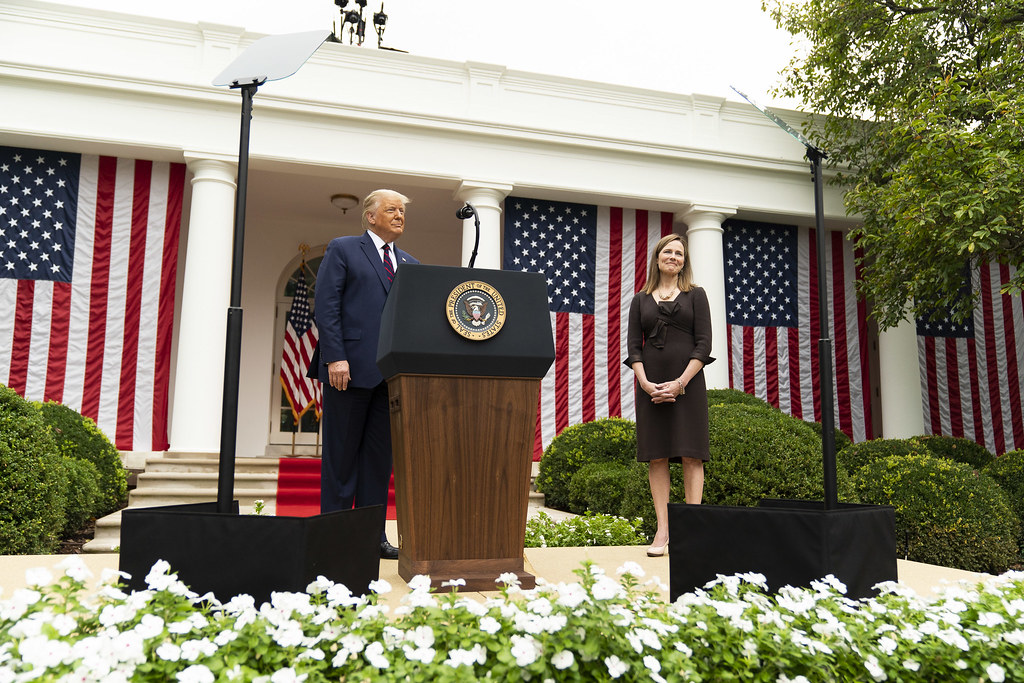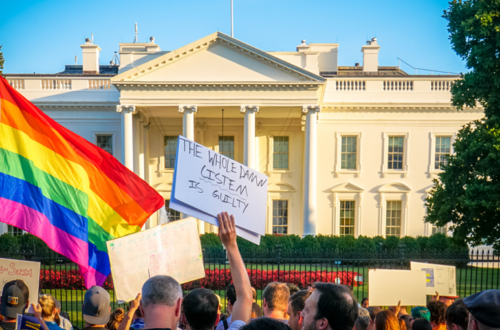It’s clear the Democrats need to take bold steps to ensure the future of this country is not held up by an undemocratic elitist institution. We need to pack the Supreme Court.
On Oct. 26, Professor and Judge Amy Coney Barrett became Justice Barrett by a vote of 52-48 in the Senate. Justice Barrett is only 48 years old, which means her voice will be heard on the court for decades to come.
Republicans pushed ACB’s confirmation in a matter of weeks despite the lack of any stimulus bill for the average American. Why? Trump has very little chance of re-election, losing in the key swing states he needs to win again, and Mitch McConnell and the Republicans are solidifying their legacy.
If the lack of help from Congress during this crisis wasn’t enough, McConnell wants to hold up major legislation for future decades. ACB’s confirmation solidifies the 6-3 conservative majority on the court.
History tends to repeat itself. After the death of Justice Scalia, then-President Barack Obama nominated Merrick Garland to the Supreme Court in 2016. However, instead of giving Garland a fair hearing, the Republican-controlled Senate refused to budge.
Mitch Connell, the majority leader, said “the American people should have a say in the court’s direction.” The current Chairman of the Senate Judiciary Committee, Lindsey Graham, once said “I want you to use my words against me. If there’s a Republican president in 2016 and a vacancy occurs in the last year of the first term, you can say Lindsey Graham said let’s let the next president, whoever it might be, make that nomination.”
Well, Lindsey Graham, your words speak for themselves. The Republicans refused to hold a hearing for Garland 237 days before the election, yet they rushed Barrett’s nomination eight days before the 2020 election in which over 60 million people have already voted.
When the future of the planet is in the balance, bold steps must be taken. However, is it unprecedented to expand the Supreme Court? No, actually.
From the early days of Jefferson and Adams to Lincoln and Johnson, the court’s size has been changed many times. It hasn’t been done in a while, but the nature of the Supreme Court has also changed. Justices used to be confirmed in near unanimity with a 96-3 yes vote on Ruth Bater Ginsburg’s confirmation.
As conservative interests continue to challenge vital and popular policies ranging from the Affordable Care Act to environmental regulations, the Supreme Court has gained much power. From a purely pragmatic viewpoint, too much power is held in the hands of nine individuals with votes often being down to 5-4 margins. There are no term limits and no checks on their power.
The arguments against court packing are numerous from both sides of the political aisle.
While 54% of Americans oppose packing the court, 57% believe the election winner should decide who should replace the notorious RBG.
The conservative think-tank The Heritage Foundation writes against court packing, saying “court-packing destroys judicial independence.” However, our court is more ideological than ever.
‘Judicial independence’ is a right-wing talking point to pretend conservative justices believe in constitutionalism when Justices have been forming their own policy against the constitution since Marbury v. Madison established judicial review in 1803.
Conservatives further argue that “packing the court will only ever yield short-term political victories at the cost of the long-term health of our Republic.” If climate protections are struck down and the conservative court continues to dismantle the ACA, there will not be many citizens left in this ‘Republic,’ and there will be no more planet for us to destroy.
To guard against the concentration of power in the hands of too few individuals and to ensure the legislative agendas of popularly elected presidents aren’t held up by an undemocratic institution, we must pack the Supreme Court.
Featured image: President Trump nominates Amy Coney Barrett to the Supreme Court. Unmodified public domain image by The White House. (https://bit.ly/3mFZAh4)
Check out other recent articles from the Florida Political Review here.






One Comment
GENE SILVERS
More than half of what to do about the problems our country has in it—including the many very big and extremely big ones—is: 1) stop the Supreme Court from striking campaign spending limits down by packing it and giving it a supermajority requirement (including by nuking the Senate filibuster); and then, 2) put campaign spending limits into our country’s election races—including good-enough ones into enough of them. Our country’s primary and general election races—especially the ones for the higher offices—are basically all races where the candidate that wins the race mainly does it by having a big-enough very unfairly-large political campaign (including a high-enough-spending very unfairly-high-spending political campaign, and including a political ideology that’s far-enough to the right for the bigger campaign contributors—which are mainly on the right—to give that campaign enough funding to spend.)